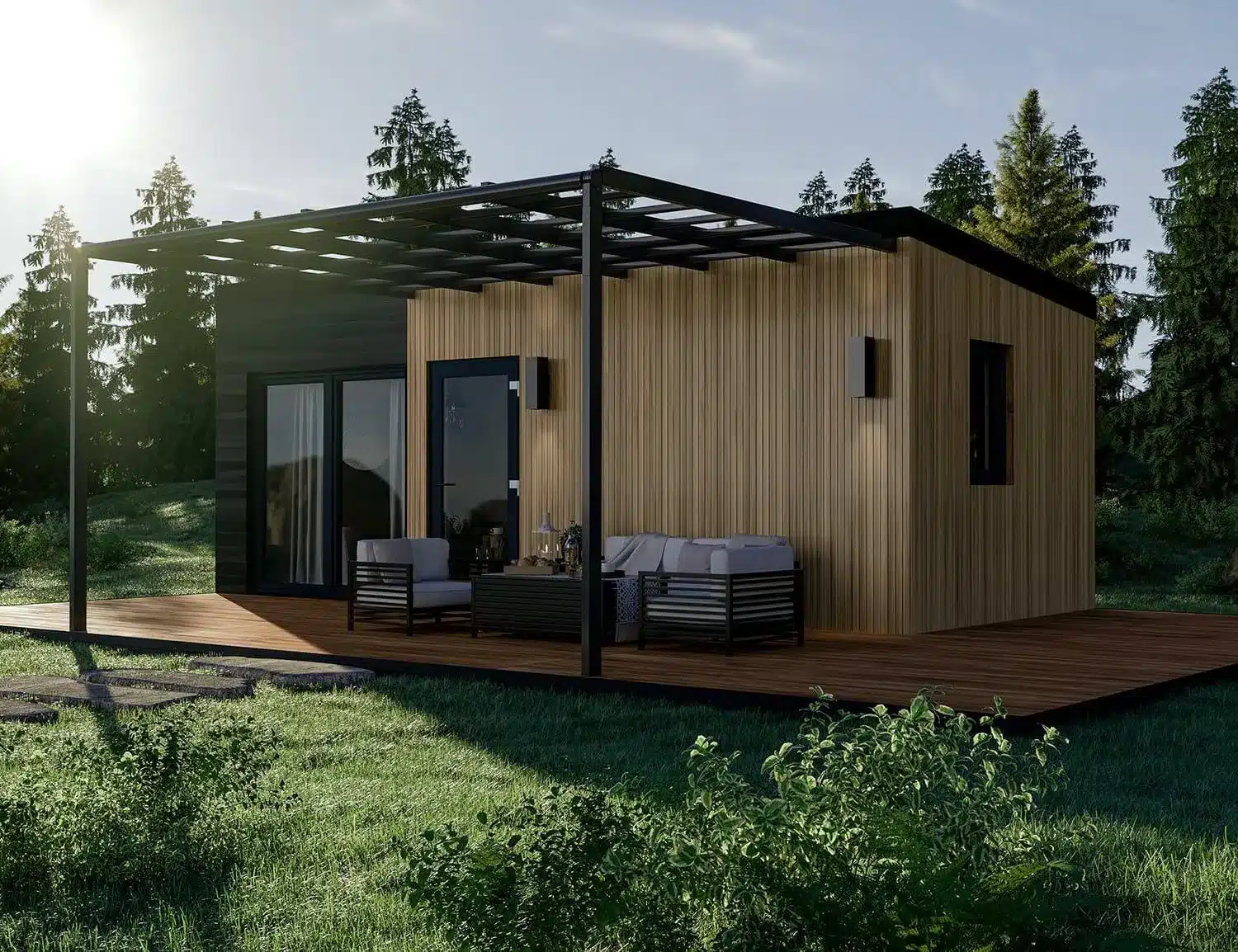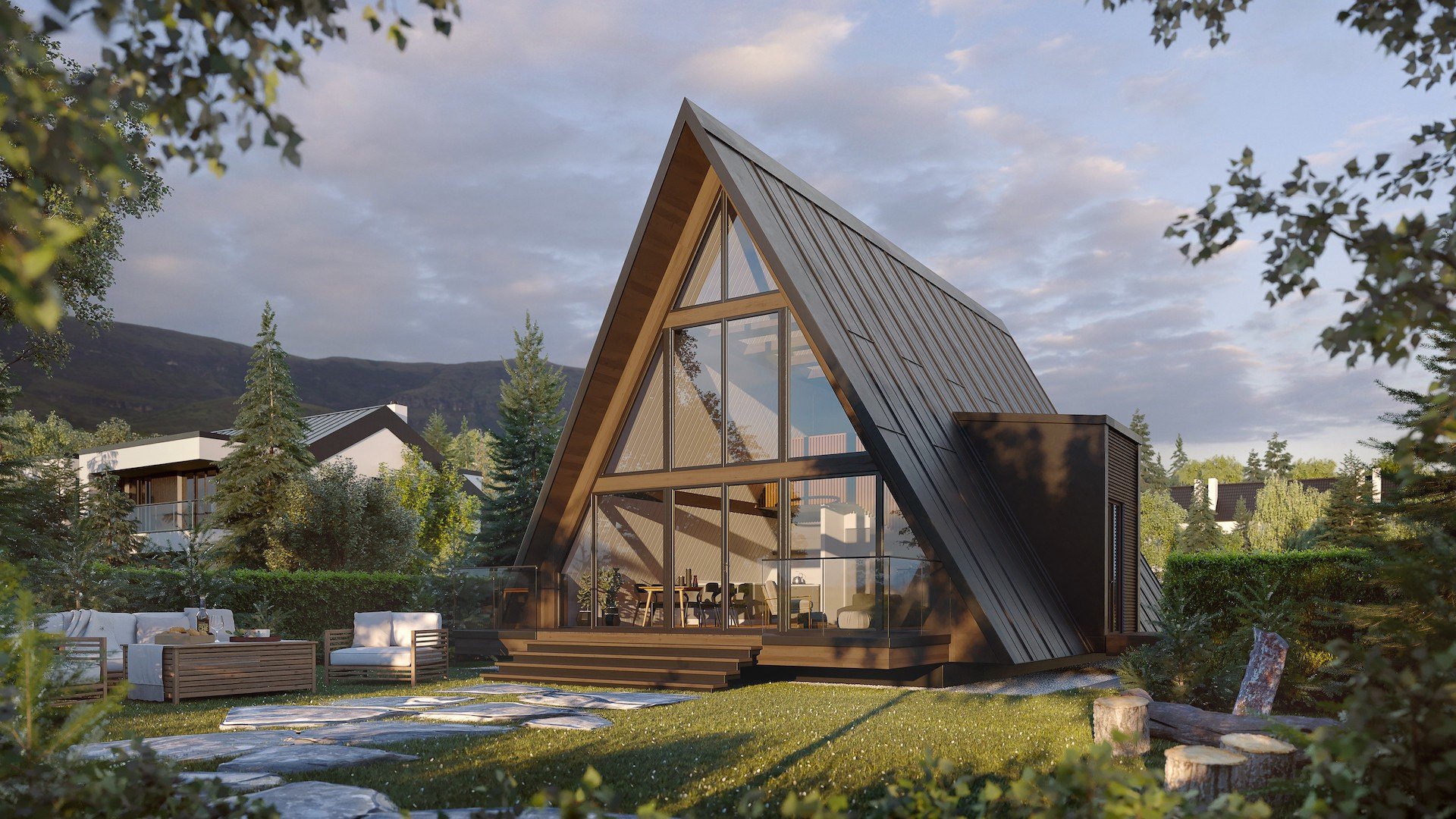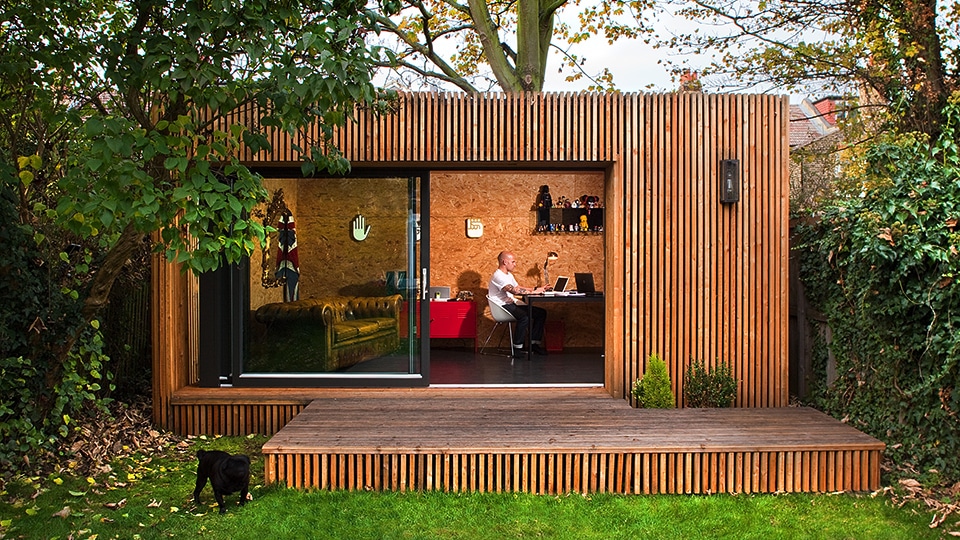Cladding can be used for aesthetics, weatherproofing, cost reduction or improved sustainability. It can be an additional layer or the only weatherproof layer for an exterior wall, either retrofitted or part of a new house build. Architects generally like cladding as it’s an opportunity to be more creative, with a massive variety of materials, textures and colours available.
Get advice at an early stage about your local planning authority in case they have restrictions or requirements that you should follow regarding the aesthetic of your house. Your architect, or the planning authorities’ website, may give sufficient guidance to provide you with clarity.
Cladding as an additional layer
Exterior wall cladding may be used to cover part or all of the exterior wall to protect the wall or achieve a new aesthetic. Cladding can be used to add texture and colour to reduce the visual monotony of the existing brick, pebbledash, or lime plaster facade. Cladding is often used in retrofit as part of an external wall insulation (EWI) system to reduce heat loss through the wall.
This would typically comprise an insulation layer with the cladding fixed over it, with a waterproof membrane between the two depending on the insulation and cladding materials.
Cladding may be explicitly used to add weather protection to the existing exterior, for example, adding a layer of slate tiles to an exterior wall that faces the prevailing wind and rain to reduce the weathering of, and dampness in, the wall.
Cladding as your weatherproof layer
You may not have overthought your weatherproof coating because, in most housebuilding, the brick, stone, or concrete walls form the structure and may be rendered with cement or lime or left visible. Timber construction, except for log cabins with solid log walls, naturally leads us to think about the wall build-up. The timbers will hold up the roof, leaving us to ponder what we need to close, insulate and weatherproof our house.
The cladding has been used for millennia in some areas in the form of wood shingles or slate to protect earth walls from driving wind and rain, for example, in coastal west Wales or the Scottish Isles. 20th-century commercial and industrial buildings extensively used metal, asbestos, plastic and other sheet materials to form the exterior layer of a wall. Those then became increasingly available and popular in house design from the 70s until now.
New synthetic cladding materials, and old materials processed in new ways, increase aesthetic variety and opportunities to reduce construction costs and environmental impact. For example, wooden shingles have become more prevalent in recent years, with new production techniques lowering costs and variability.
What types of cladding are there?
Wood cladding
has various ways in which wood can be used as a cladding material, including vertical planks, horizontal shiplap and wooden shingles. They can give a wide range of different effects because of their shape and orientation, the wood’s choice and treatment and the pieces’ width or configuration.
Timber cladding options
Treated timber planks can be placed side by side on the exterior wall with an expansion gap in between and a waterproof membrane underneath to prevent rain from moving into the house. Alternatively, planks can be overlapped, like fallen dominoes, or placed in two layers, with the first layer placed with gaps that are then covered by the timber planks forming the second layer. The kiln-dried and treated timber is more stable, less likely to shrink or twist, and less at risk of infestation. Wood can be protected using natural oils such as linseed, or the surface can be burned before installation to create a visual effect whilst protecting the timber.
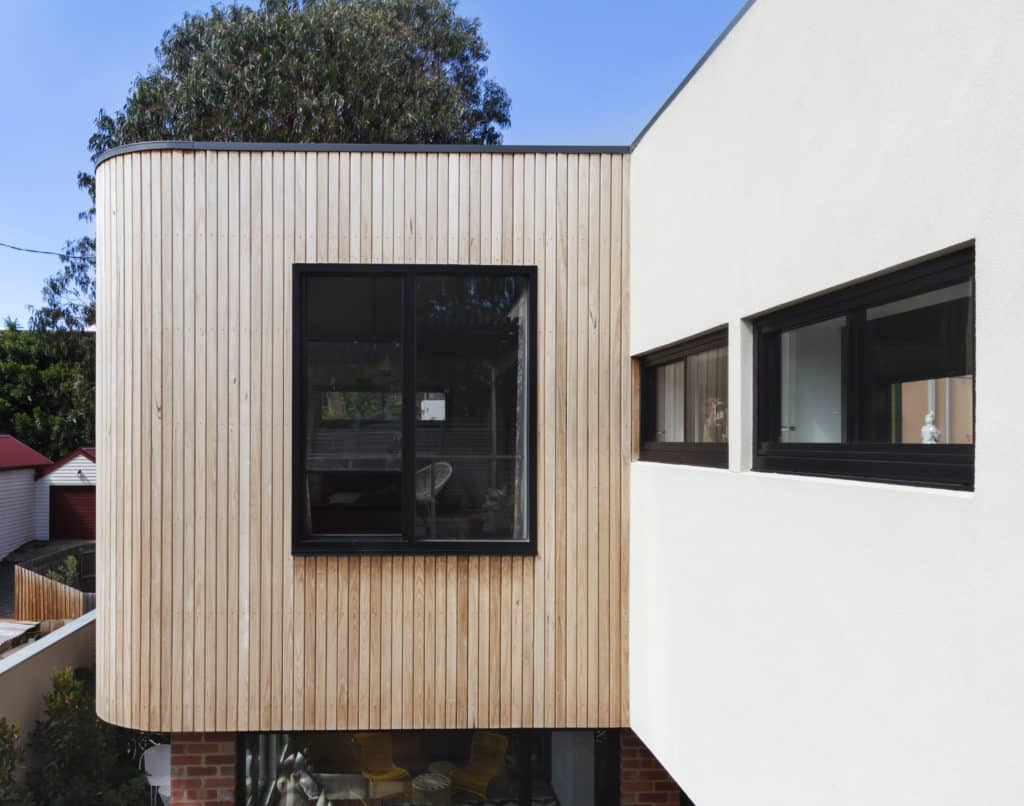
Horizontal shiplap can be formed using machine-cut kiln-dried planks, or for a more rustic look, the visible edge can be left uncut, even with bark on. Again, the planks last longer if treated, though there are plenty of examples where shiplap has lasted for centuries. An advantage of a more rustic shiplap is that more gaps allow for good airflow through and behind, which is essential to avoid rot.
Shingles are becoming more popular, driven by the demand for sustainable and traditional aesthetics. They can also be used on roofs as tiles but also serve well on walls to keep off The rain and the coldest wind. As shingles are small pieces, they are much more labour-intensive to install than planks. Shingles tend to warp and twist more than planks, becoming brittle or displaced over time, allowing ingress of rain or wildlife. On the plus side, they’re easy to replace.
Other natural materials for cladding
Stone cladding is now widespread, though you may not have noticed it because, of course, the house looks like it’s made of stone, or at least like it has one or two stone walls. The house structure is made of breeze blocks or timber frames, with stone cladding as its weatherproofing. Stone is a classic aesthetic, often matched to local stone, or that may be actively required by planning authorities, for example, in Bath, UK. It’s prevalent in the mainstream, which makes it easy to find and to find installers also. It’s durable and far more lightweight than building the structure with solid stone.
A version of this is brick slip cladding. Bricks are traditionally made from clay or earth and fired at high temperatures. Though brick slips will contain chemical additives to make them more durable, they may also be brick-effect slips made of uPVC. The principal is the same, though, in that the building appears to be made of brick when it just forms the outer weatherproof layer. Brick slips are often used in external wall insulation where the building was originally brick to retain the original look.
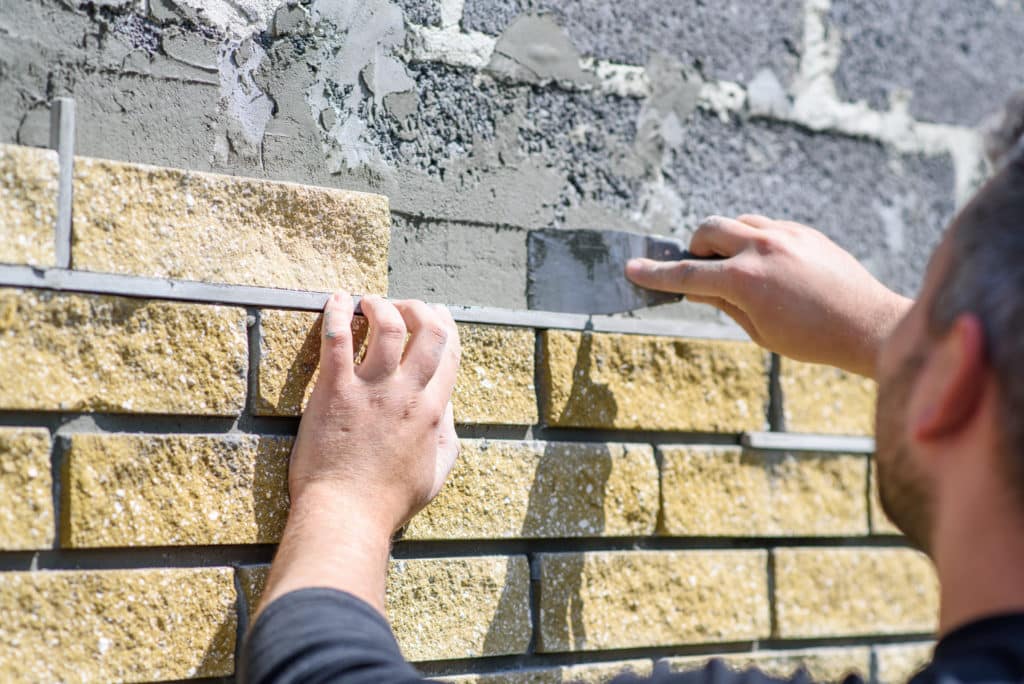
Slate tiles may be used as an additional weatherproof layer where there is a high incidence of strong wind and rain, for example, in coastal areas, mainly where there is a traditional aesthetic and local availability—other cladding materials to consider.
Vinyl, aka uPVC, cladding is synthetic and comes in many colours and textures, mimicking natural materials such as wood or slate or making bold, unapologetic statements. Vinyl is typically durable, and modern systems improve airflow where required, reduce the amount of material, and increase the recycled content.
Aluminium composite and zinc are bold and contemporary, composed of large sheets of each material. Whilst these materials are energy intensive, they are also very durable, require little maintenance, and are easily recycled at the end of life, so little material value is lost. Specialists always install these, but they are a speedy way to make the building weatherproof, assuming they arrive on schedule from the manufacturer.
Commercial buildings use all sorts of other materials. If you’re creative, you may be able to use wastage from commercial building sites or other material upcycling to create original cladding with the technical and aesthetic characteristics that you’re looking for.
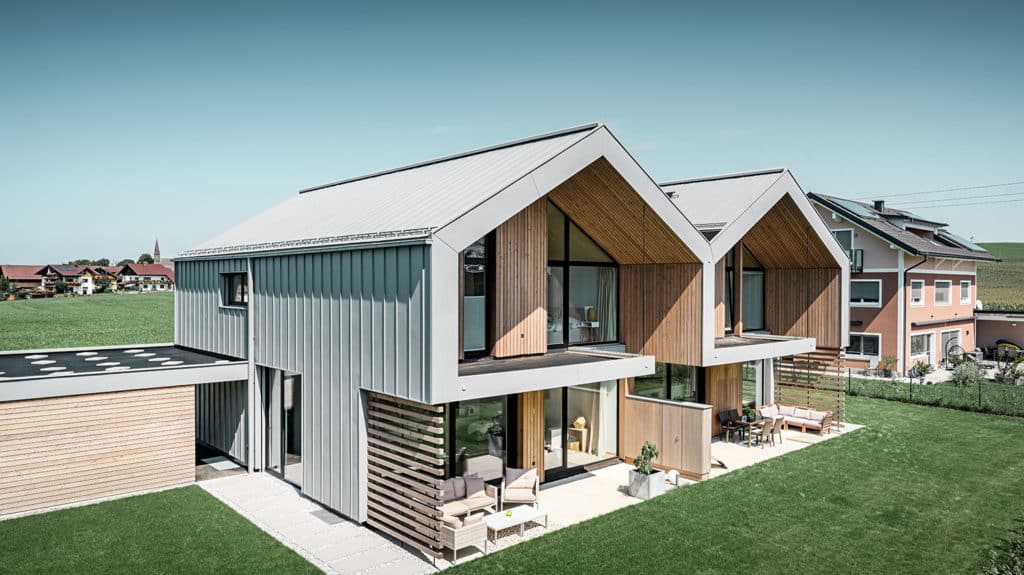
Before you choose your cladding, do these things.
Look closely at the houses near where you are building your house because trends in surrounding houses often represent available local materials or planning requirements. By looking closely at nearby homes, you may notice whether cladding has been used and what materials are typical.
If possible, visit cladding manufacturers before purchasing to feel the cladding with your hands, see how it’s made, see how the finished product can vary, and select the specific pieces for your project. This is particularly important with wood as it can warp, twist and bend in storage, but any materials may look quite different online to how they appear when they arrive on site. uPVC may be suitable for your project, but if you are selecting something that imitates a natural material, you should see and feel it before ordering it to reduce the risk of a sinking feeling when the synthetic feel of your shiny new house dawns on you after installation.
Who will install your cladding? If you plan to install it yourself, select a system that is easier to implement well or learn as you go. For example, overhanging larch shiplap is less complex and forgiving than positioning and nailing shingles.
Cladding greatly affects how you feel about your home in terms of its aesthetic, cost, maintenance and environmental impact, so enjoy exploring and choosing the right thing for your project.

